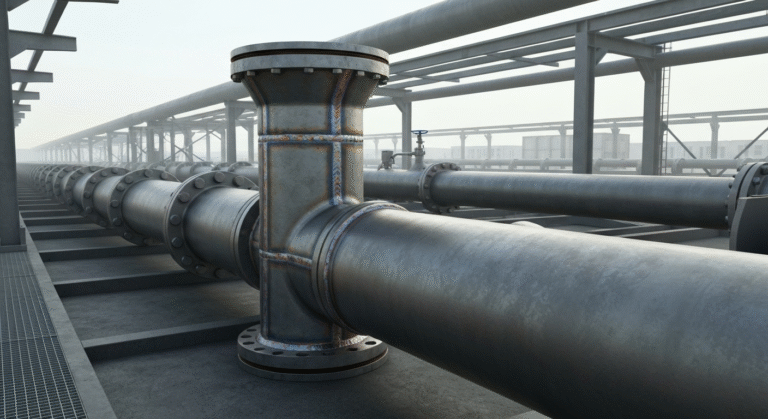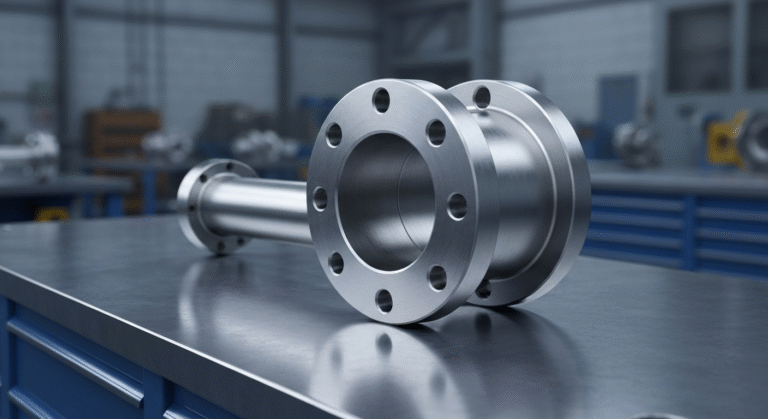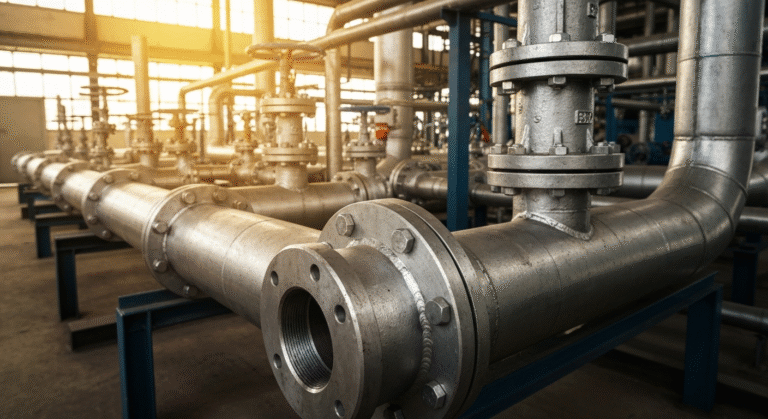-
Yinzhuang Industrial zone,Mengcun county,Cangzhou city,Hebei province,China
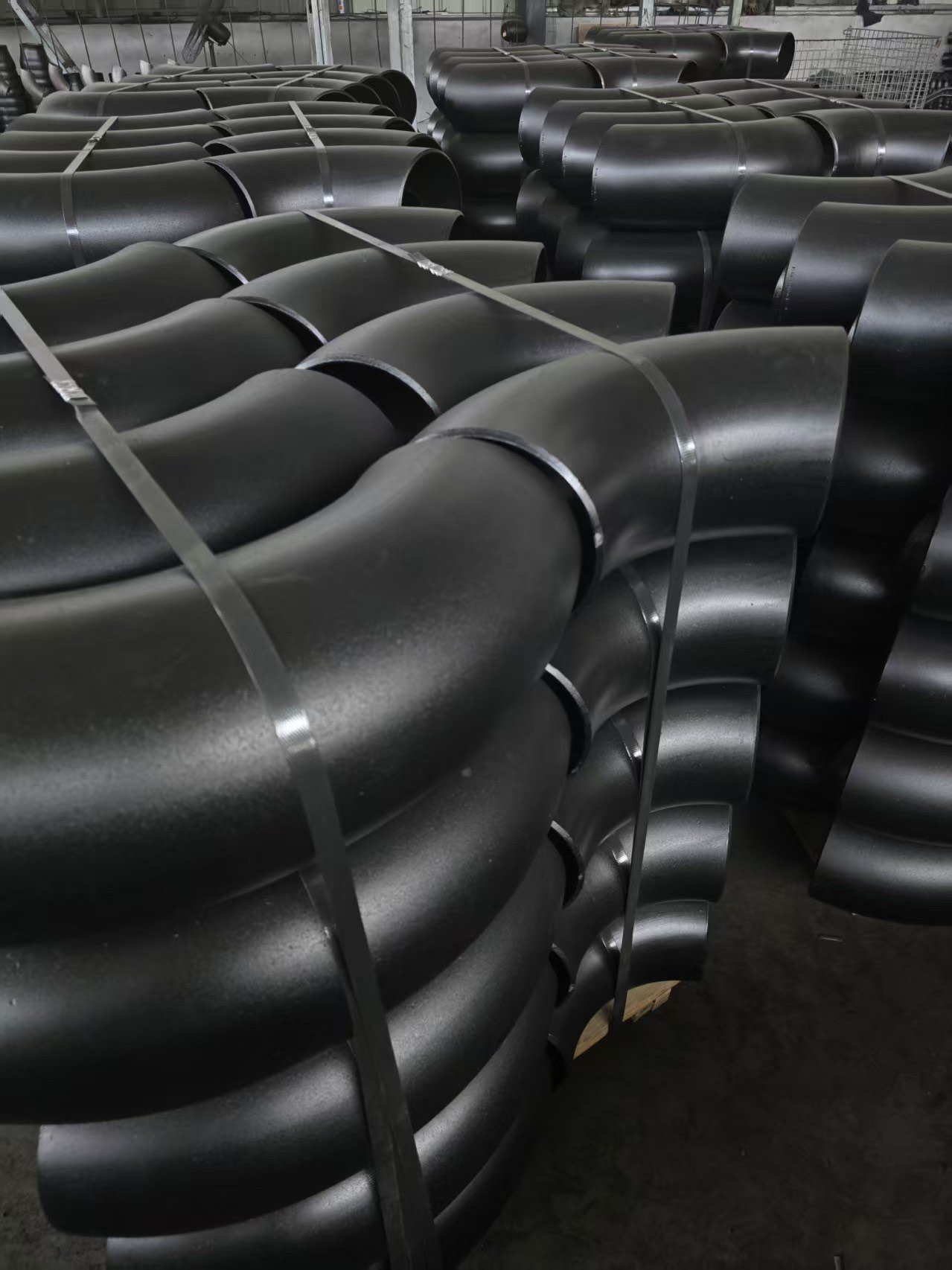
Seamless Elbow Specifications: ASME B16.9 Explained
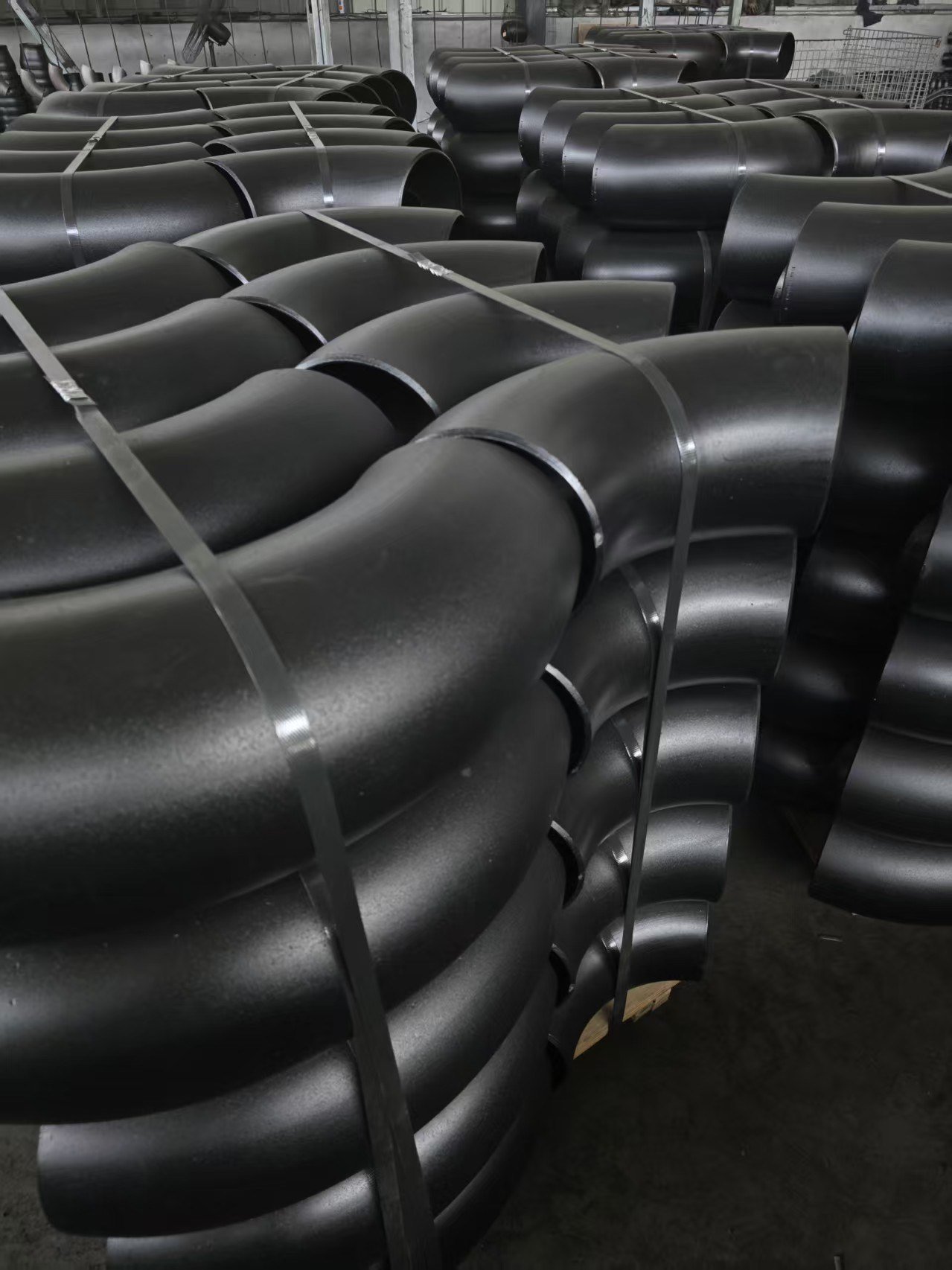
Key Highlights
Here’s a quick look at what you need to know about seamless elbows:
- ASME B16.9 is the primary standard that governs the dimensions, tolerances, and material requirements for pipe fittings.
- Elbows are categorized by their bend radius: long radius (LR) and short radius (SR).
- A long radius elbow has a bend radius of 1.5 times the pipe’s diameter (1.5D), ensuring smoother fluid flow.
- Common materials for these fittings include durable options like carbon steel and corrosion-resistant stainless steel.
- The choice between elbow types depends on factors like space, pressure, and flow rate requirements in your piping system.
Introduction
When it comes to building or maintaining industrial piping, every component matters. Seamless elbows are fundamental pipe fittings that allow you to change the direction of a pipeline safely and efficiently. To ensure these parts are reliable and interchangeable, they must conform to specific standards. The ASME B16.9 standard is the definitive guide for these fittings, outlining everything from diameter and wall thickness to the types of materials that can be used, such as carbon steel and stainless steel.
To install a long radius butt weld elbow in a pipeline, you first align the elbow with the corresponding ends of the pipes, ensuring precise orientation for the desired directional change. Next, the beveled ends of the elbow and pipes are cleaned and prepared, then tack welded to hold the assembly in place. Finally, a full circumferential butt weld is performed according to industry codes, creating a strong, leak-proof joint.
Overview of Seamless Elbows in Piping Systems
Seamless elbows are essential components in a vast range of piping systems. Unlike welded fittings, they are manufactured from a single piece of material, which gives them superior strength and eliminates the risk of leaks along a seam. Their main job is to redirect the flow of liquids or gases.
Steel long radius elbows, a type of seamless elbow, are commonly available in sizes ranging from 1/2 inch up to 48 inches in diameter, with standard sizes widely stocked for most industrial and commercial applications.
You’ll find these fittings connecting pipes, valves, and other equipment to create a cohesive and functional network. Understanding their basic function and the different types available is the first step in selecting the right components for your project. We’ll explore their definition and common uses in more detail. To install a long radius butt weld elbow in a pipeline, first ensure the ends of the pipes and the elbow are properly cleaned and beveled. Align the elbow with the pipes, tack weld it in place, and then complete the welding process according to relevant pipeline standards to ensure a secure and leak-free connection. Proper inspection and testing should follow to confirm a reliable installation.
Definition and Function of Seamless Elbows
So, what exactly is a seamless elbow? It’s a type of pipe fitting produced without a welded seam, designed specifically to change the direction of flow in a pipeline. This seamless construction provides exceptional structural integrity, making it a preferred choice for high-pressure and high-temperature applications where reliability is paramount.
Steel long radius elbows, a common type of seamless elbow, are widely available in standard sizes typically ranging from 1/2 inch up to 48 inches in diameter. These varied sizes allow seamless elbows to accommodate different pipeline dimensions and project requirements.
The primary function of these elbows is to connect two pipes at an angle, allowing the pipeline to turn. The most common angles are 90 degrees and 45 degrees, but custom angles are also available for specialized projects. By using a seamless elbow, you can route your piping around obstacles and create the necessary layout for your system.
Ultimately, these fittings ensure a continuous and leak-proof path for the fluid being transported. They are engineered to match the diameter and wall thickness of the connecting pipes, guaranteeing a smooth transition that minimizes turbulence and pressure drop within the system.
Common Applications in Industrial Settings
Due to their strength and durability, seamless elbows are indispensable in numerous industrial settings. Their ability to handle stress and resist corrosion makes them suitable for some of the most demanding environments, from chemical processing to energy production. The choice of material, such as stainless steel or carbon steel, is tailored to the specific demands of the application.
These fittings are a cornerstone of industrial piping infrastructure, ensuring that materials are transported safely and efficiently. You will commonly find seamless elbows, along with other fittings like flanges and valves, in complex pipeline networks. Their robust design contributes to the overall safety and longevity of the entire system.
Some of the key industries that rely heavily on seamless elbows include:
- Oil and Gas: For transporting petroleum and natural gas through extensive pipeline networks.
- Power Generation: In nuclear, fossil fuel, and renewable energy plants.
- Chemical and Petrochemical: For handling corrosive and high-temperature fluids.
- Shipbuilding: In marine piping systems for various onboard functions.
Types of Seamless Elbows: Long Radius vs Short Radius
When you’re choosing a seamless elbow, one of the most important distinctions is the bend radius. This leads to two main types: the long radius (LR) elbow and the short radius (SR) elbow. A long radius elbow features a gentler curve, with a bend radius that is 1.5 times the nominal pipe size.
On the other hand, a short radius elbow has a much sharper turn. Its bend radius is equal to the pipe’s diameter. This fundamental difference in design affects everything from the space the fitting occupies to the way fluid behaves as it passes through. Let’s look at how their design and use cases differ.
Key Differences in Design and Usage
The core difference between a long radius and a short radius elbow lies in the distance from the center of the curve to the face of the fitting. This dimension dictates the elbow’s overall shape and how it impacts fluid dynamics within a pipeline. The LR elbow’s gradual bend minimizes turbulence and pressure loss.
In contrast, the SR elbow’s tight turn is more compact but creates greater flow resistance. This makes the long radius elbow the standard choice for most applications, especially where maintaining flow efficiency is a priority. Short radius elbows are typically reserved for situations where space is extremely limited and a sharper bend is unavoidable.
Here’s a simple breakdown of their differences:
Feature | Long Radius (LR) Elbow | Short Radius (SR) Elbow |
|---|---|---|
Bend Radius | 1.5 times the pipe diameter (R=1.5D) | Equal to the pipe diameter (R=D) |
Fluid Flow | Smoother flow, less resistance, and lower pressure drop | Sharper turn, higher resistance, and potential for turbulence |
Space Requirement | Needs more physical space due to its wider curve | Compact design is ideal for tight or restricted areas |
Common Application | High-flow rate and high-pressure systems (e.g., oil and gas) | Low-pressure systems or where space is the primary concern |
Selecting the Right Radius for Your Project
How do you decide which elbow radius is right for your project? The choice isn’t just about what fits; it’s about what works best for your system’s performance and longevity. Making the correct selection between a long radius and short radius elbow is crucial for optimizing your pipeline.
Your decision should be based on the specific requirements of your application. Ask yourself if minimizing pressure drop is a top priority or if you are working within a confined space. The answers to these questions will point you toward the ideal fitting for the job.
Here are a few key considerations to guide your choice:
- Use a Long Radius (LR) Elbow when you need to maintain a smooth, efficient flow and minimize pressure loss, especially in high-velocity pipelines.
- Use a Short Radius (SR) Elbow when you are constrained by space and a compact fitting is the only viable option.
- Evaluate Pressure: LR elbows are generally the preferred option for high-pressure rating systems because of their smoother flow characteristics.
- Consider the Fluid: For abrasive or solid-laden fluids, the gentler sweep of an LR elbow can reduce wear and erosion on the pipeline.
ASME B16.9 Standards: Essential Requirements
The ASME B16.9 standard is the cornerstone for manufacturing buttwelding pipe fittings. This specification, recognized globally, ensures that fittings like seamless elbows are produced with consistent quality and dimensions. Adhering to standards from organizations like ASME, ANSI, and ASTM is not just about compliance; it’s about guaranteeing safety and interoperability.
This standard provides a universal language for manufacturers and engineers, detailing critical attributes such as diameter, wall thickness, and material grades. Understanding these requirements is essential for anyone involved in designing, constructing, or inspecting piping systems.
Dimensions and Tolerances for Long Radius Elbows
ASME B16.9 provides very specific guidelines for the dimensions of long radius elbows to ensure they fit perfectly within a pipeline. This standardization means you can be confident that a fitting from one certified manufacturer will be interchangeable with another’s. The standard covers key measurements like the outer diameter, wall thickness, and, most importantly, the center-to-face dimension.
For a 90° long radius elbow, the center-to-face dimension is defined as 1.5 times the nominal pipe size (NPS). This measurement creates the signature wide sweep of an LR elbow. For example, a 4-inch NPS long radius elbow would have a center-to-face dimension of 6 inches.
The standard also outlines acceptable tolerances, which are small, allowable variations in these dimensions that can occur during manufacturing. These tolerances ensure that even with minor deviations, the elbow will function correctly and maintain a secure connection, which is vital for the safety and reliability of the entire system.
Pressure Ratings and Material Specifications
Alongside dimensions, ASME B16.9 references ASTM standards to define material specifications that directly influence an elbow’s pressure rating and suitability for different environments. The material you select must be able to withstand the temperature, pressure, and potential corrosiveness of the fluid it will carry.
An elbow’s pressure-handling capability is often indicated by its schedule number (Sch). A higher schedule number, like Sch 80, signifies a thicker wall and, consequently, a higher pressure rating compared to a lower schedule, like Sch 40, for the same pipe size. This is a critical factor for ensuring the safety of high-pressure systems.
Common material specifications designated by ASTM include:
- Carbon Steel: ASTM A234 Grade WPB is a widely used material for moderate and high-temperature service. Source: https://www.astm.org/a0234_a0234m-23.html
- Stainless Steel: ASTM A403 grades, including WP304 and WP316, are chosen for their superior corrosion resistance.
- Alloy Steel: Materials like ASTM A234 WP11 and WP22 are specified for high-temperature and high-pressure applications found in power plants and refineries.
Frequently Asked Questions (FAQ)
Curious minds often want to know about various aspects of seamless elbows. Commonly, how do they differ in material? For instance, seamless fittings can come in stainless steel or carbon steel, each with its own advantages. Another frequent question is about wall thickness; does it impact strength and durability? Yes, thicker walls support higher pressures. Finally, the nominal pipe size is crucial for proper fitting in pipeline systems. These insights can help demystify this essential piece of piping.
What does 1.5D mean for long radius elbows?
The designation “1.5D” on a long radius elbow refers to its curvature. The ‘D’ stands for the nominal diameter of the pipe fitting. Therefore, 1.5D means the radius of the elbow’s curve, measured from the centerline to the face, is one and a half times the pipe’s diameter.
How are seamless long radius elbows manufactured?
Seamless long radius elbows are typically made using the mandrel forming process. In this method, a straight section of seamless pipe is heated and pushed over a curved die called a mandrel. This action forces the pipe to bend into the elbow shape while maintaining a consistent wall thickness.
What are typical materials used for ASME B16.9 long radius elbows?
ASME B16.9 long radius elbows are available in a wide range of materials to suit various pipeline needs. The most common include carbon steel (e.g., ASTM A234 WPB), stainless steel (e.g., ASTM A403 WP304/316), and alloy steels for specialized high-temperature or high-pressure services.
Conclusion
In summary, understanding the specifications of seamless elbows as outlined in ASME B16.9 is crucial for ensuring the integrity and efficiency of your piping systems. By selecting the appropriate types and adhering to the established standards, you can enhance the performance and durability of your projects. It’s essential to consider the specific requirements of your application, whether it be for industrial purposes or otherwise. With the right knowledge and resources, you can confidently make informed decisions that lead to successful outcomes in your piping endeavors. If you have any questions or need further assistance, feel free to reach out for expert guidance.
